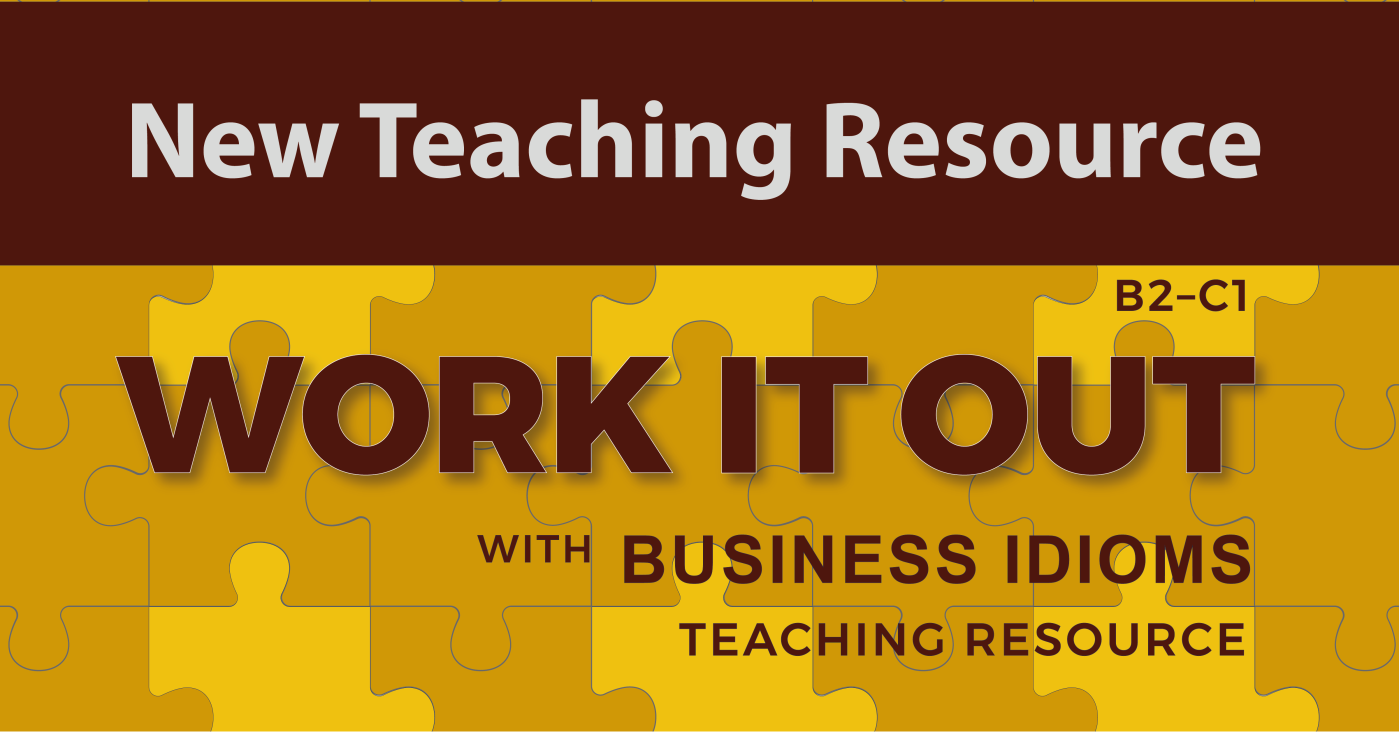Do you know your arm and a leg from your elbow? Do your students?
Having been teaching Business English and corporate clients for nearly 20 years now, one of the things I have often thought missing from BE coursebooks is some exploration of idiom and vernacular, because it really is everywhere in business. I do think that many coursebooks (and obviously some more than others) are much better than at being lexical and functional in their approach these days, but idiom is still a poor cousin to more functional and less colourful phrases.
Which is a shame, because while a lot of business and office work is conducted in plain speech; a lot of it isn’t. When we want to be opaque and when we want to be less direct in our speech, it is often idiom to which we turn. Being British, I don’t want to tell you exactly how much my new car cost as that would reveal far too much personal information, so I might instead, laughingly tell you it cost an arm and a leg. For anyone who is wondering, to replace an arm and a leg with prosthetics would probably cost you about USD 75000. So now you know…
The latest in the Work it Out series from Prosperity Education focuses on Business Idioms and one of the immediate draws for me is the way the structure of the book lends itself to supplementing a standard syllabus / coursebook structure.
There are four main sections in the book, the “Work outs” which are essentially the plans and procedures, the teaching tools, the handouts, and an Idiom dictionary which I think will be a useful review for most teachers before beginning a class. The teaching tools are the materials that will need preparing before the lesson – the cut up matching tasks or the separable texts for jigsaw readings etc. The handouts are the worksheets that the students work on and take away from the lesson.
There are 12 work outs in the book, which as I said, mirror the sorts of topics that usually come up in BE coursebooks – meetings and presentations are there, along with branding, leadership and job interviews. Possible misses here are telephoning and negotiations which are part of the main suite of BE skills, though telephoning is perhaps catered for under the broader aspect of communication.
The structure of the lessons follows a practical pattern for new vocabulary and lexis; there is a lead in for the topic, the language is presented in context and then the meaning is examined in context – which I like as it asks the students to think more about the meaning and to try and work it out for themselves – ah! Lightbulb moment! I see what they did there! But I do like that about the book, the idea of students figuring out language patterns for themselves in what I guess is technically guided discovery, but perhaps with less guiding than you usually see in coursebooks, is something that I think we are seeing more of these days as the “tell me and I forget, let me do and I remember” ideology becomes more prevalent.
The lessons move on with another meaning check, essentially a concept questions task, and then a free-ish spoken practice activity. A review activity is also included at the end of the lesson, though I think I would probably use that time to review idioms from a previous lesson personally.
I do find the timings of the lessons somewhat long. I realise that timing lessons for coursebooks and supplementary materials isn’t easy as each teacher and each set of students is different and will approach things at different speeds. The book is pitched at B2+ level, though linguistically I think B1 level students would be able to handle most of it. Another nice feature of the lessons is the “Extra Support”, which are little sections that offer partial feedback for when students are struggling with a task. On top of that, there are also fast finisher tasks, so it seems like there is enough flexibility for any variation in the classroom and I would say for using the materials at levels outside the B2+ target.
Coming back to the timings though, there is no overall timing for the lessons given, but timings are given for each stage and working it out, I would say the average lesson length is 90 – 120 minutes, though there is some variation. Most of my lessons are about 75 minutes, so I would be looking to cut a few things out, or perhaps rush my students through some of the longer stages.
Overall:
This is a book aimed at teachers, and I think is most useful as a supplementary resource for longer courses, as a way of expanding learners’ idiomatic repertoire and for providing something different and engaging the lies outside the standard syllabus. I can see it being particularly useful for teachers who have long term corporate contracts, year round teaching for example, who want to spice up their lessons, but I also think it would do quite well as the basis of a shorter extensive course for more advanced levels where knowledge of the language is already pretty good but grasp of idiom elusive. Definitely one that should be in all good teachers’ rooms everywhere.
The book is available from the Prosperity Education Amazon store and pricing is as follows: Print edition: £24.99; eBook: £19.99; Student workbook: £9.99 (class sets available)
Note: The links in the images and the text are not referral links, so there is no financial incentive for me here. Just thought you might like to know that…







1 Pingback